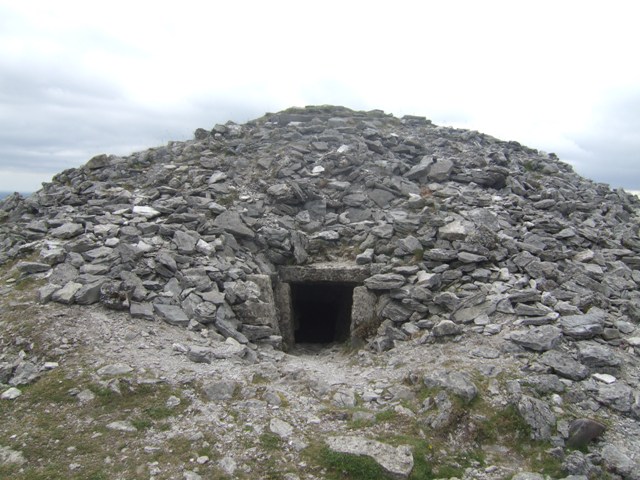|
Archipelago National Park
Archipelago National Park (, ) is a national park in Southwest Finland. It was established in 1983 and includes of land area.Archipelago National Park Most of the land is on islands smaller than . The park encompasses about 2,000 of the 8,400 islets and skerries within the cooperative area. The larger islands are mainly owned by their inhabitants. Archipelago National Park is part of the s and received a |
Metsähallitus
Metsähallitus (, , ''"the (Finnish) Forest Administration"'') is a state-owned enterprise in Finland. Its two main tasks are Parks & Wildlife Finland to manage most of the protected areas of Finland and Forestry to supply wood to the country's forest industry. Metsähallitus employs approximately 1,200 people. The company administers some of state-owned land and water areas, which is about 35% of Finland's total surface area. Its tasks are divided into business activities and public administration duties. Separate business units have been established for different activities. Organization Metsähallitus Forestry Ltd * produces about 85 percent of Metsähallitus's revenues * markets and sells timber, manages commercial forests * customers include the forest industry and other Finnish and foreign companies that use timber as raw material * forest management is based on the sustainable use of natural resources * the objective is to encourage a varied use of forest resources ... [...More Info...] [...Related Items...] OR: [Wikipedia] [Google] [Baidu] |
Neolithic
The Neolithic or New Stone Age (from Ancient Greek, Greek 'new' and 'stone') is an archaeological period, the final division of the Stone Age in Mesopotamia, Asia, Europe and Africa (c. 10,000 BCE to c. 2,000 BCE). It saw the Neolithic Revolution, a wide-ranging set of developments that appear to have arisen independently in several parts of the world. This "Neolithic package" included the History of agriculture, introduction of farming, domestication of animals, and change from a hunter-gatherer lifestyle to one of sedentism, settlement. The term 'Neolithic' was coined by John Lubbock, 1st Baron Avebury, Sir John Lubbock in 1865 as a refinement of the three-age system. The Neolithic began about 12,000 years ago, when farming appeared in the Epipalaeolithic Near East and Mesopotamia, and later in other parts of the world. It lasted in the Near East until the transitional period of the Chalcolithic (Copper Age) from about 6,500 years ago (4500 BCE), marked by the development ... [...More Info...] [...Related Items...] OR: [Wikipedia] [Google] [Baidu] |
Cremation
Cremation is a method of Disposal of human corpses, final disposition of a corpse through Combustion, burning. Cremation may serve as a funeral or post-funeral rite and as an alternative to burial. In some countries, including India, Nepal, and Syria, cremation on an Pyre, open-air pyre is an ancient tradition. Starting in the 19th century, cremation was introduced or reintroduced into other parts of the world. In modern times, cremation is commonly carried out with a Crematorium, closed furnace (cremator), at a crematorium. Cremation leaves behind an average of of remains known as ''ashes'' or ''cremains''. This is not all ash but includes unburnt fragments of bone mineral, which are commonly ground into powder. They are inorganic and inert, and thus do not constitute a health risk and may be buried, interred in a memorial site, retained by relatives or scattered in various ways. History Ancient Cremation dates from at least 17,000 years ago in the archaeological record, w ... [...More Info...] [...Related Items...] OR: [Wikipedia] [Google] [Baidu] |
Barrow (archaeology)
A tumulus (: tumuli) is a mound of Soil, earth and Rock (geology), stones raised over a grave or graves. Tumuli are also known as barrows, burial mounds, mounds, howes, or in Siberia and Central Asia as ''kurgans'', and may be found throughout much of the world. A cairn, which is a mound of stones built for various purposes, may also originally have been a tumulus. Tumuli are often categorised according to their external apparent shape. In this respect, a long barrow is a long tumulus, usually constructed on top of several burials, such as passage graves. A round barrow is a round tumulus, also commonly constructed on top of burials. The internal structure and architecture of both long and round barrows have a broad range; the categorization only refers to the external apparent shape. The method of may involve a dolmen, a cist, a mortuary enclosure, a mortuary house, or a chamber tomb. Examples of barrows include Duggleby Howe and Maeshowe. Etymology The word ''tumulus'' ... [...More Info...] [...Related Items...] OR: [Wikipedia] [Google] [Baidu] |
Cairn
A cairn is a human-made pile (or stack) of stones raised for a purpose, usually as a marker or as a burial mound. The word ''cairn'' comes from the (plural ). Cairns have been and are used for a broad variety of purposes. In prehistory, they were raised as markers, as memorials and as burial monuments (some of which Chambered cairn, contained chambers). In the modern era, cairns are often raised as landmarks, especially to mark the summits of mountains, and as Trail blazing, trail markers. They vary in size from small piles of stones to entire artificial hills, and in complexity from loose conical rock piles to elaborate megalithic structures. Cairns may be painted or otherwise decorated, whether for increased visibility or for religious reasons. History Europe The building of cairns for various purposes goes back into prehistory in Eurasia, ranging in size from small rock sculptures to substantial human-made hills of stone (some built on top of larger, natural hills). ... [...More Info...] [...Related Items...] OR: [Wikipedia] [Google] [Baidu] |
Palynology
Palynology is the study of microorganisms and microscopic fragments of mega-organisms that are composed of acid-resistant organic material and occur in sediments, sedimentary rocks, and even some metasedimentary rocks. Palynomorphs are the microscopic, acid-resistant organic remains and debris produced by a wide variety of plants, animals, and Protista that have existed since the late Proterozoic.Neuendorf, K.K.E., J.P. Mehl, Jr., and J.A. Jackson, eds., 2005, ''Glossary of Geology'' (5th ed.). Alexandria, Virginia, American Geological Institute. 779 pp. It is the science that studies contemporary and fossil palynomorphs (paleopalynology), including pollen, spores, orbicules, dinocysts, acritarchs, chitinozoans and scolecodonts, together with particulate organic matter (POM) and kerogen found in sedimentary rocks and sediments. Palynology does not include diatoms, foraminiferans or other organisms with siliceous or calcareous tests. The name of the science and o ... [...More Info...] [...Related Items...] OR: [Wikipedia] [Google] [Baidu] |
Iron Age
The Iron Age () is the final epoch of the three historical Metal Ages, after the Chalcolithic and Bronze Age. It has also been considered as the final age of the three-age division starting with prehistory (before recorded history) and progressing to protohistory (before written history). In this usage, it is preceded by the Stone Age (subdivided into the Paleolithic, Mesolithic and Neolithic) and Bronze Age. These concepts originated for describing Iron Age Europe and the ancient Near East. In the archaeology of the Americas, a five-period system is conventionally used instead; indigenous cultures there did not develop an iron economy in the pre-Columbian era, though some did work copper and bronze. Indigenous metalworking arrived in Australia with European contact. Although meteoric iron has been used for millennia in many regions, the beginning of the Iron Age is defined locally around the world by archaeological convention when the production of Smelting, smelted iron (espe ... [...More Info...] [...Related Items...] OR: [Wikipedia] [Google] [Baidu] |
Dragsfjärd
Dragsfjärd is a former municipality of Finland. On 1 January 2009 it was consolidated with Kimito and Västanfjärd to form the new municipality of Kimitoön. It is located in the province of Western Finland and is part of the Southwest Finland region. The municipality had a population of 3,378 (2004-12-31) and covered an area of 274.95 km2 of which 8.17 km2 is water. The population density was 12.66 inhabitants per km2. Western part of the municipality belongs to the Southwestern Archipelago National Park and forms the eastern part of the park. The municipality was bilingual with 76% of the population being Swedish speakers and 21% being Finnish speakers. People from Dragsfjärd *Artur Wuorimaa (1854 – 1921) *Wilhelm Ramsay Wilhelm Ramsay (20 January 1865 – 6 January 1928) was a Finnish geologist. He became a member of the Royal Swedish Academy of Sciences in 1914 and in 1915 was accepted into the Royal Physiographic Society in Lund. He coined the ter ... [...More Info...] [...Related Items...] OR: [Wikipedia] [Google] [Baidu] |
Post-glacial Rebound
Post-glacial rebound (also called isostatic rebound or crustal rebound) is the rise of land masses after the removal of the huge weight of ice sheets during the last glacial period, which had caused isostatic depression. Post-glacial rebound and isostatic depression are phases of glacial isostasy (glacial isostatic adjustment, glacioisostasy), the deformation of the Earth's crust in response to changes in ice mass distribution. The direct raising effects of post-glacial rebound are readily apparent in parts of Northern Eurasia, Northern America, Patagonia, and Antarctica. However, through the processes of ''ocean siphoning'' and ''continental levering'', the effects of post-glacial rebound on sea level are felt globally far from the locations of current and former ice sheets.Milne, G.A., and J.X. Mitrovica (2008) ''Searching for eustasy in deglacial sea-level histories.'' Quaternary Science Reviews. 27:2292–2302. Overview During the last glacial period, much of northern Euro ... [...More Info...] [...Related Items...] OR: [Wikipedia] [Google] [Baidu] |
Down Feather
The down of birds is a layer of fine feathers found under the tougher exterior feathers. Very young birds are clad only in down. Powder down is a specialized type of down found only in a few groups of birds. Down is a fine thermal insulator and padding, used in goods such as Down jacket, jackets, bedding (duvets and featherbeds), pillows and sleeping bags. The discovery of feathers trapped in ancient amber suggests that some species of non-avian dinosaur likely possessed down-like feathers. Description and etymology The word ''down'' comes from the Old Norse word ''dúnn'', which had the same meaning as its modern equivalent. The down feather is considered to be the most "straightforward" of all feather types. It has a short or vestigial rachis (shaft), few barb (feather), barbs, and barbules that lack hooks. There are three types of down: natal down, body down and powder down. Natal down is the layer of down feathers that cover most birds at some point in their early developmen ... [...More Info...] [...Related Items...] OR: [Wikipedia] [Google] [Baidu] |
Grey Seal
The grey seal (''Halichoerus grypus'') is a large seal of the family Phocidae, which are commonly referred to as "true seals" or "earless seals". The only species classified in the genus ''Halichoerus'', it is found on both shores of the North Atlantic Ocean. In Latin, ''Halichoerus grypus'' means "hook-nosed sea pig". Its name is spelled gray seal in the United States; it is also known as Atlantic seal and the horsehead seal. Taxonomy There are two recognized subspecies of this seal: The type specimen of ''H. g. grypus'' ( Zoological Museum of Copenhagen specimen ZMUC M11-1525, caught in 1788 off the island of Amager, Danish part of the Baltic Sea) was believed lost for many years, but was rediscovered in 2016, and a DNA test showed it belonged to a Baltic Sea specimen rather than from Greenland, as had previously been assumed (because it was first described in Otto Fabricius' book on the animals in Greenland: ''Fauna Groenlandica''). The name ''H. g. g ... [...More Info...] [...Related Items...] OR: [Wikipedia] [Google] [Baidu] |
Atlantic Cod
The Atlantic cod (: cod; ''Gadus morhua'') is a fish of the family Gadidae, widely consumed by humans. It is also commercially known as '' cod'' or ''codling''.''Atlantic Cod'' . Seafood Portal. In the western Atlantic Ocean, cod has a distribution north of Cape Hatteras, , and around both coasts of and the ; in the easte ... [...More Info...] [...Related Items...] OR: [Wikipedia] [Google] [Baidu] |









